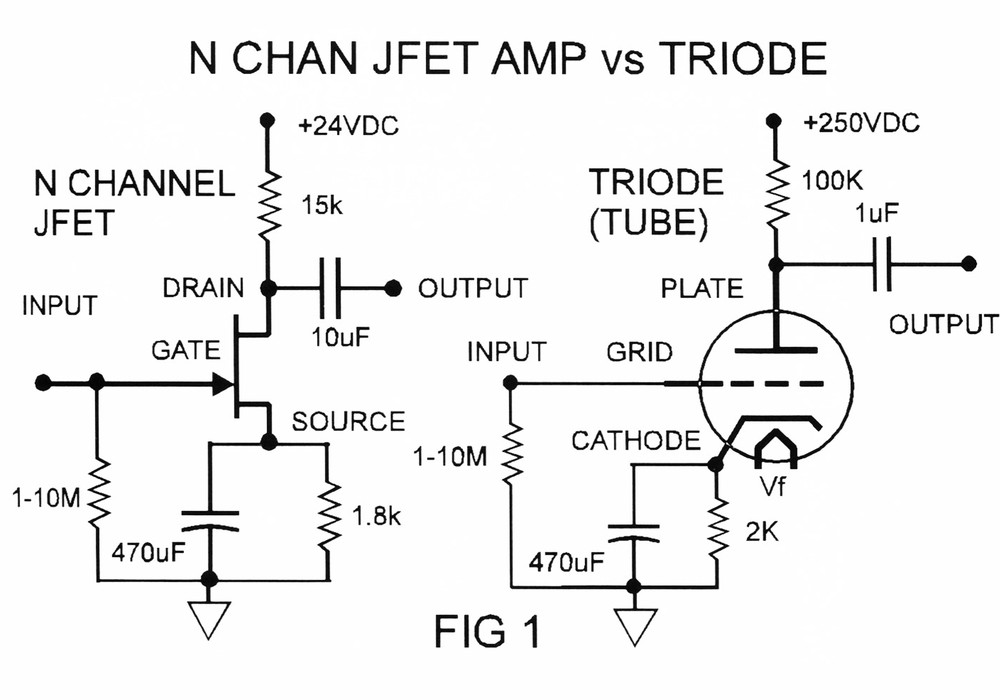

JFETs will give us a good picture of how transistor circuits work. Although MOSFETs are much more common than JFETs, we will work with JFETs because MOSFETs burn out so easily. Once soldered into a circuit, however, MOSFETs are quite robust.

Static electricity easily destroys MOSFETs they can be burnt out simply by walking across a room on a dry day while carrying them in your hand. (To be complete, each type of FET is further subdivided into n and p-channel FETs, and, for MOSFETs, enhancement and depletion MOSFETs, but we won't cover this now.) FETs are subdivided into two major classes: junction field-effect transistors (JFETs) and metal-oxide-semiconductor field-effect transistors (MOSFETs). We will limit our study to FETs because their physical mechanism is simpler. The physical mechanisms underlying the operation of these two types of transistors are quite different. There are two principle types of transistors: bipolar transistors (BJTs), and field-effect transistors (FETs). Why does increasing a follower’s source resistor ( $R_S$) decrease its JFET’s transconductance? (Refer to the discussion in 4.16.) Why does this degrade the performance of a source follower? Why does it give the equilibrium current for the self-biased current source?Ĥ. Explain how to use load line analysis as outlined in the background materials. In a few sentences, explain how a self-biased current source works.ģ. What is the maximum allowed gate current? What happens if this current is exceeded?Ģ. All parts spec sheets are located on the Physics Library site.ġ.



 0 kommentar(er)
0 kommentar(er)
